Last updated: September 15, 2021
Article
Volcanoes of Lake Clark
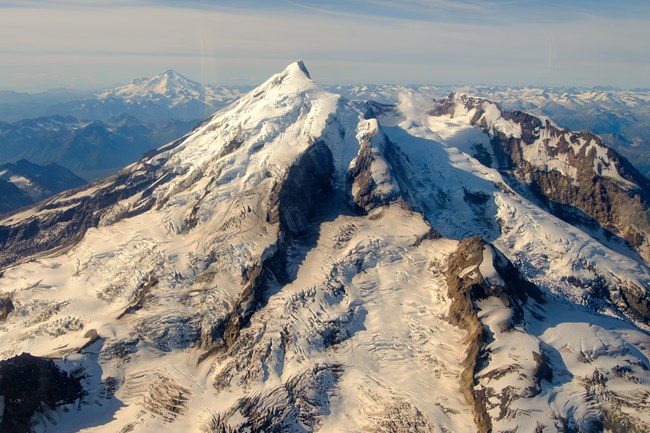
Photo courtesy Alaska Volcano Observatory/M. Loewen
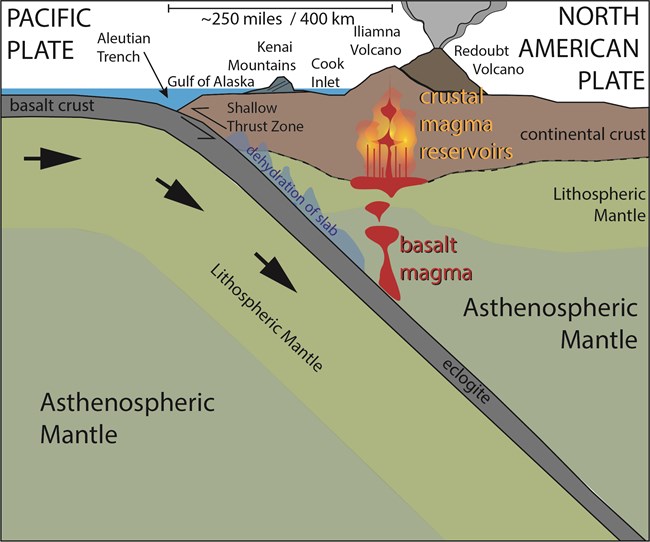
Photo courtesy Alaska Volcano Observatory/B. Browne
Why Are There Volcanoes Here?
Lake Clark National Park is located along the Ring of Fire, which is home to most of the world’s greatest earthquakes and active volcanoes. Redoubt and Iliamna sit on the Alaska-Aleutian subduction zone. Here, the dense oceanic crust of the Pacific Plate slides beneath the lighter continental crust of the North American Plate. The plates move about 2.6 inches per year. Beneath the surface of the Kenai Mountains, the Pacific Plate dives abruptly at the western edge of Cook Inlet. The crust of the Pacific Plate can reach a depth of more than 60 miles beneath the Chigmit Mountains. The intense heat and pressure melts rocks, creating magma. This magma then gets pushed up through volcanoes (vents) on the Earth’s surface.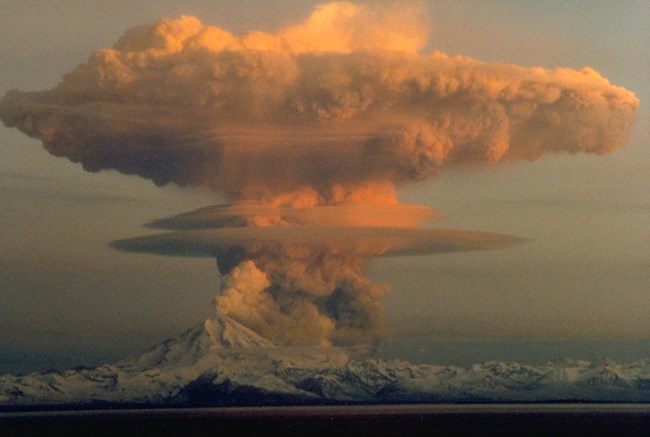
Photo courtesy USGS/R.J. Clucas
Dangerous Beauty
Eruptions from Redoubt and Iliamna are not likely to flow effusively, and with ease, like those of the Hawaiian volcanoes. In effusive eruptions, magma is runny and gases can bubble out easily like in a pot of boiling chili. Instead, the lava from the park’s volcanoes is thick, sticky, and flows like cold honey. Trapped gases in the lava can cause dramatic eruptions. These violent eruptions break the magma into solid pieces, known as pyroclasts. Pyroclasts can be many different sizes, ranging from boulders to ash. Like a popcorn popper filled with kernels and confetti, the larger, heavier particles fall closer to the volcano’s vent. The smaller, lighter particles travel further away. This creates the tall, conical shape of a stratovolcano. A stratovolcano, or composite volcano, is cone-shaped with steep slopes and is formed by a series of eruptions, often lava or volcanic ash.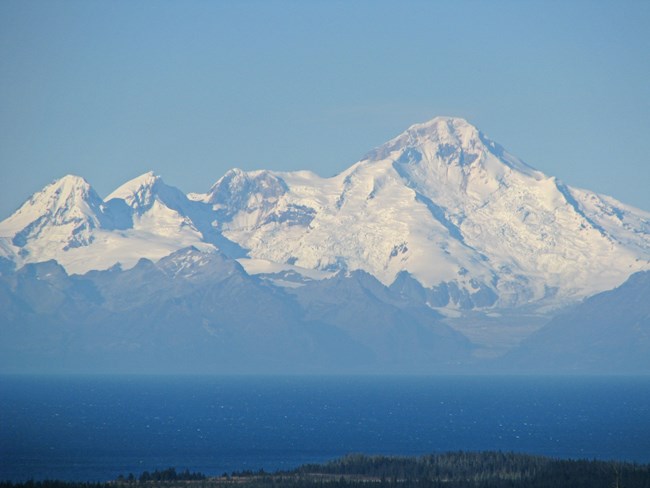
Photo courtesy AVO/USGS Dennis Anderson
Iliamna Volcano
Iliamna is an active stratovolcano that rises to 10,016 feet tall in the Chigmit Mountains located in Lake Clark National Park and Preserve. Glaciers cover most of the volcano. Iliamna regularly emits plumes of steam, but has not had a confirmed eruption in recorded history. Eruptions from Iliamna have been dated back to about 300 and 140 years ago. The Alaska Volcano Observatory monitors Iliamna along with more than 50 other active volcanoes in the state. Most of Iliamna volcano is covered by perennial snow and ice and numerous glaciers near the summit area. In the past 10,000 years, Iliamna has produced several big eruptions – erupting at least 28 times since the 1740s. Iliamna and Redoubt are both classic and active stratovolcanoes, designated as National Natural Landmarks in 1976.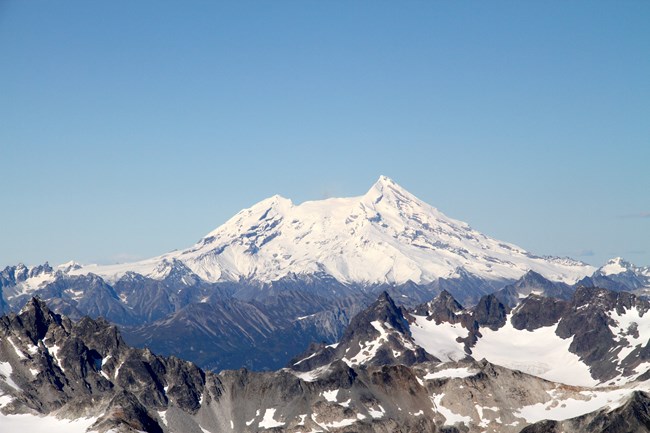
NPS Photo/M. Richotte
Redoubt Volcano
Redoubt has had more eruptions than Iliamna. Redoubt has erupted at least 30 times in the last 10,000 years - most recently in 1989 and 2009.- Redoubt's 1989-1990 eruption began on December 14th, 1989 and continued to erupt for over six months. Snow and ice melted at the summit. Lahars flowed down the mountain, reaching distances up to 20 miles away!
- Redoubt’s 2009 eruption began on March 22, 2009 after several months of unrest. Lahars moved swiftly down the sides of the volcano and ash clouds reached thousands of feet into the sky. The final event occurred on April 4th, 2009 along with an ash cloud reaching 50,000 ft (9 miles high). Ash was carried swiftly to the southeast, depositing ash in Homer, Anchor Point, and Seldovia.
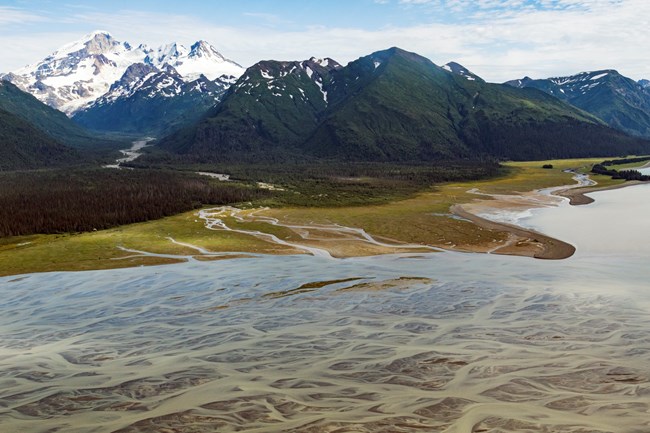
NPS Photo/T. Vaughn
Scientists continue to monitor the landscape. No one can say when the next eruption will occur, only that it will. The lengthy warnings of volcanic unrest prior to Redoubt's eruptions have given scientists a chance to better understand the warning signs and events leading to volcanic eruptions. Exploring these volcanoes and their history may help with predicting volcanic eruptions in the future. These landforms have deep meanings to many people who live in the surrounding region. The Dena’ina people have lived in Lake Clark for thousands of years and have descriptive place names that help us understand more about these mighty volcanoes. Ch’naqal’in (Iliamna Volcano) translates to 'one that stands above' and Bentuggezh K’enulgheli (Redoubt Volcano) translates to 'one that has a notched forehead' in the Dena'ina language.
